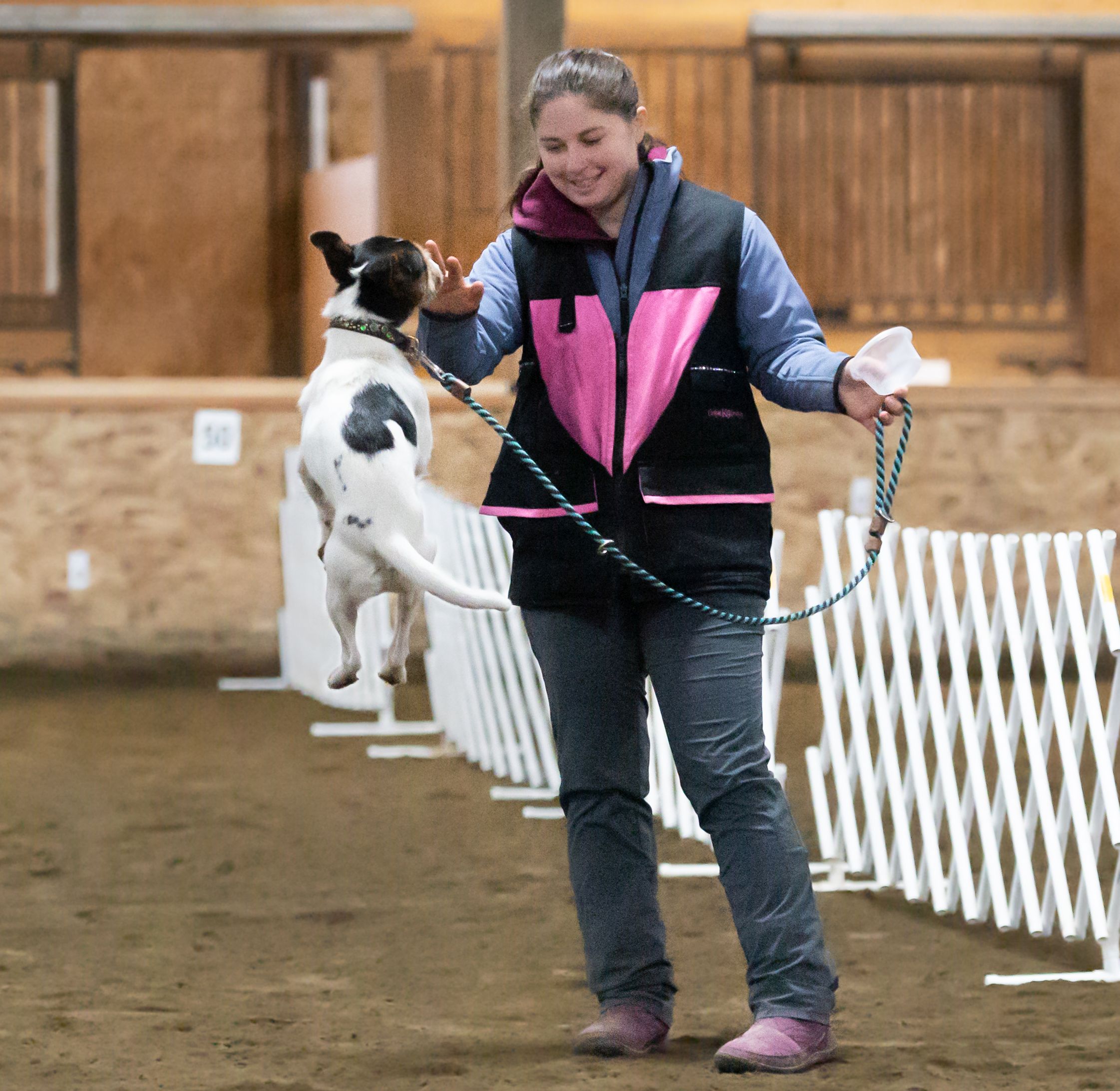Course Details
Do you constantly get the same feedback from your isntructor over and over again? Does learning new handling techniques feel like a game of twister while running full speed? Breaking new skills down into smaller pieces is NOT just for teaching our dogs new skills: it's for YOU too! Agility handler mechanics are the micro-skills of handling. They are the key movements that come up again and again in every technique that we learn. When these movements are in automation, learning to put those movements together into techniques takes less time and less frustration for everyone involved.
This class isolates the agility handler’s physical cues, training them without the dog. Class participants will develop an understanding of how dogs respond to our physical cues and how to use those cues more effectively on an agility course. By isolating common movements, we will develop fluency in your communication with the dog. The handler who takes this course will be better prepared to teach their dog the skills necessary to confidently follow their handling.
Students will hone their eye, feet, and upper body cues neutral to any handling system. You will learn about the timing of cues, the position of your cues, and how to reward your dog for following those cues. As the class progresses, students will learn how these isolated movements can be combined to form common handling techniques and how to walk courses more effectively to reduce errors when adding the dog to the equation.
This class is appropriate for any level agility handler, including those brand-new to agility. Since we are working without dogs, proper agility equipment and field access are not required.
Teaching Approach
This class is skill-based for the human! That means that each handler moves at their own pace as we work through the material together to learn each key movement and then build handling techniques learn how to sequence without the dog. Lecture materials include wordy concepts, videos, videos with voice-over analysis, and images to explain the material. Feedback is given via text and some voice-over analysis, so that the student can see what's happening in an exact moment in time.
This is the first class in a series of three: AG365, AG400, AG375
It is highly recommended to take this class at Gold or Silver if you are interested in a Gold or Silver spot in one of the following handling classes.
This class will have a Teacher's Assistant (TA) available in the Facebook study group to help the bronze and silver students! Directions for joining that Facebook group will be in the classroom after you register.
 Instructor: Megan Foster
Instructor: Megan FosterMegan (she/her) has been involved in the dog sport world nearly her entire life. Though her family did compete in obedience, agility was Megan’s passion right from the start. With over 20 years experience, she has competed with a variety of dogs...(Click here for full bio and to view Megan's upcoming courses)
